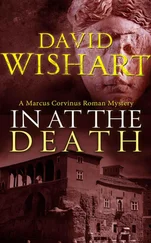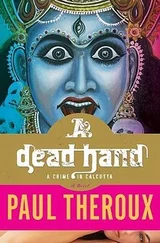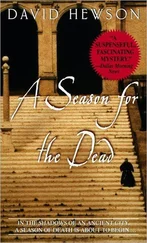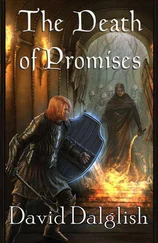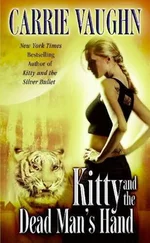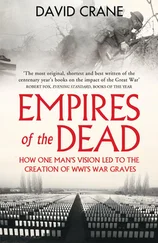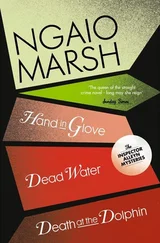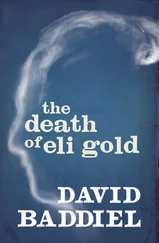10 BBC Summary of World Broadcasts, Aug. 10, 1987, SU/8642/A1/1. Smidovich interview, April 23, 2008. Vice President George Bush had proposed inspections on demand in 1984, and the Soviets refused at the time.
11 The order accelerated by three years the deadline for having “biological sites” prepared “for international verification for presence of chemical weapons.” The new deadline was January 1, 1989. The spravka is undated. Katayev, Hoover.
12 Matthew S. Meselson, “The Biological Weapons Convention and the Sverdlovsk Anthrax Outbreak of 1979,” Public Interest Report, Journal of the Federation of American Scientists , vol. 41, no. 7, Sept. 1988, pp. 1–6. This article is Meselson’s account of the Soviet visit to the United States in 1988 as well as his 1986 visit to Moscow. He reported the Soviets had identified one source of contaminated bonemeal used as a cattle feed supplement from a “meat processing plant at Aramil, a town 15 km southeast of Sverdlovsk.” The story was that the Aramil plant had not followed sterilization and autoclave procedures in making the bonemeal, therefore allowing the anthrax bacteria to spread to cattle and, when the cattle were slaughtered, to consumers. In 1991, Peter Gumbel, Moscow bureau chief of the Wall Street Journal , investigated the Sverdlovsk outbreak by going to the city three times, including to Aramil. “In fact, there is no meat processing plant in Aramil,” he reported. He found a small flour mill there instead, and quoted the director as saying he never produced bonemeal. Gumbel said in his article that “sloppy note-taking” by Meselson “could possibly account for this discrepancy,” but Gumbel suggested a Soviet cover-up. He wrote that “the official Soviet version is riddled with inconsistencies, half-truths and plain falsehoods.” Peter Gumbel, “Sverdlovsk—What Really Happened?—The Scientific Evidence: The Anthrax Mystery,” Wall Street Journal , Oct. 21, 1991, p. A18. Meselson told the author the Aramil discrepancy was a note-taking mix-up on his part. On Burgasov, see R. Jeffrey Smith, Philip J. Hilts, “Soviets Deny Lab Caused Anthrax Cases,” Washington Post , April 13, 1988. The CIA was unconvinced by the Soviet visitors in 1988. On May 12, the Directorate of Intelligence issued a top-secret report. Although most is redacted, the title was “Soviet Explanation of Anthrax Incident at Sverdlovsk: The Deception Continues.”
13 Alibek, p. 148.
14 “Biological Weapons Proliferation Prevention Project Integration: 100% Final Submittal—Phase 0 Feasibility Study for Threat Reduction Activities at Vozrozhdeniya Island, Uzbekistan,” Bechtel National Inc., August 31, 2001, released to author under FOIA, Defense Threat Reduction Agency; “Vozrozhdeniya Island (VI) Pathogenic Destruction Operations (VIPDO) Final Report,” June 6, 2002, released to author under FOIA.
15 The reader is reminded that while biological weapons were made from living organisms, such as pathogens, chemical weapons are made from inert substances that cause damage and death to living organisms.
16 Tucker, p. 158.
17 Most of the weapons were quite old, according to documents in the Katayev files.
18 John-Thor Dahlburg, “Soviets Lift Secrecy on Chemical Weapons Program,” Associated Press, Oct. 4, 1987; Celestine Bohlen, “Soviets Allow Experts to Tour Chemical Weapons Facility,” Washington Post , Oct. 5, 1987. On the weapons, Katayev, Hoover.
19 Reagan diary, Dec. 18, 1987. This entry has been partly redacted.
20 Mirzayanov, interview with author; Oleg Vishnyakov, “‘I Was Making Binary Bombs,’ This Man Is Talking After Five Years of Silence. He Was Poisoned by Chemical Weapons Made by His Own Hands,” Novoye Vremya , no. 50, Dec. 1992, pp. 46–48, 49. An account is also given in David Wise, Cassidy’s Run (New York: Random House, 2000), Ch. 20.
CHAPTER 14: THE LOST YEAR
1 Gorbachev had hoped for a treaty to cut strategic weapons in half at the Moscow summit, but the United States was not ready. “Reagan, Gorbachev and Bush at Governor’s Island,” TNSA EBB No. 261.
2 Brent Scowcroft, who became Bush’s national security adviser in the White House, was deeply cautious about Gorbachev. George Bush and Brent Scowcroft, A World Transformed (New York: Knopf, 1998), pp. 12–13.
3 “Session of the CPSU Politburo,” June 20, 1988. Masterpieces of History: Soviet Peaceful Withdrawal from Eastern Europe , Svetlana Savranskaya, Thomas Blanton and Vlad Zubok, eds. (Budapest: Central European University Press, 2009), Doc. 26.
4 See TNSA EBB 261. To bypass possible military opposition, Gorbachev took the paperwork to the Defense Ministry for approval on a Sunday when Minister Dmitri Yazov was not present, Shevardnadze said at a Politburo meeting on December 27. “Comrades were not in place” then, he said. News reports at the time said that Akhromeyev decided to retire in protest of the troop cuts. In his memoir, Gorbachev said this was “sheer nonsense.” Gorbachev, Memoirs , p. 459. Akhromeyev said the decision to retire came in September 1988, before the speech, but he was disenchanted. He remained an adviser to Gorbachev. Sergei Akhromeyev and Georgi M. Kornienko, Glazami Marshala i Diplomata (Moscow: International Relations, 1992), pp. 213–215.
5 Reagan diary, Dec. 7, 1988.
6 Any evaluation of Reagan’s legacy must deal with not only his avowed dream of nuclear abolition, but the fact that he did not consummate a strategic arms treaty by the end of his presidency. Some have argued that if he had been more interested in negotiating arms reductions in his first term, he might have had more to show at the end of his second. However, the author believes that Reagan’s first-term military buildup and challenge to the Soviets were set by his own internal compass—his campaign pledges, his desire to stand up to Moscow and his negotiator’s sense of timing and tactics. He could not have done it otherwise.
7 Bush said, “Wanting to avoid specifics, I pledged general continuity with Reagan’s policies toward the Soviet Union. I told Gorbachev I would be putting together a new team. I had no intention of stalling things, but I naturally wanted to form my own national security policies.” Bush and Scowcroft, p. 7.
8 Masterpieces , Gorbachev at Politburo, Dec. 27–28, 1988, doc. 34.
9 This Week with David Brinkley , ABC News, Jan. 22, 1989.
10 James A. Baker III, The Politics of Diplomacy: Revolution, War and Peace, 1989–1992 (New York: G. P. Putnam’s Sons, 1995), p. 68.
11 Bush letter to Sadruddin Aga Khan, March 13, 1989, in Bush, All the Best, George Bush , p. 416.
12 Dennis Ross, director of policy planning at the State Department, said “testing” was his idea. “For those who said Gorbachev was not for real, I said, let’s test the proposition. If he’s for real, then he’s going to respond.” Ross, interview, June 2, 2008. In a speech at Texas A&M University in May 1989, Bush unveiled the results of the policy reviews, an approach that he called going “beyond containment.” He did not offer major new initiatives, but set the tone for the “testing” approach, which was also codified in NSD 23, written in March and signed in September 1989. The directive said, “the United States will challenge the Soviet Union step by step, issue by issue, institution by institution, to behave…”
13 Cheney made the comment on CNN. When Baker went to Moscow a few weeks later, the first thing he told Shevardnadze was, “We have no interest in seeing perestroika fail.” Baker, p. 73.
14 William C. Wohlforth, ed., Cold War Endgame: Oral History, Analysis, Debates (University Park, Pa.: Pennsylvania State University Press, 2003), p. 26. An analysis of the pause in 1989 is contained in an essay in the same volume, “Once Burned, Twice Shy? The Pause of 1989,” Darek H. Chollet and James M. Goldgeier, pp. 141–173. By contrast, in three long and illuminating cables from Moscow in February, Matlock laid out the extent of change. “In sum,” Matlock said, “the Soviet Union has, in effect, declared the bankruptcy of its system, and just as with a corporation which has sought the protection of Chapter XI, there is no turning back.” Matlock included a section on “The Military Burden,” which accurately captured Gorbachev’s desire to restrain the military to save the domestic economy. “The Soviet Union over the Next Four Years,” Feb. 3, 1989. The subsequent cables covered Soviet foreign policy and U.S.-Soviet relations. Masterpieces , docs. 42, 44, 46.
Читать дальше

